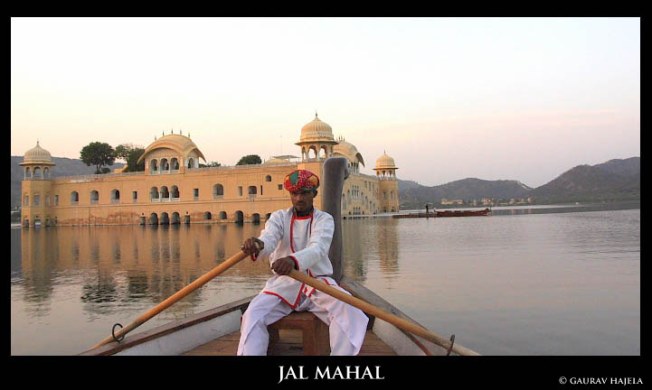Every tourist place in Rajasthan has a story to tell. While in some, sculptures become alive, narrating tales of bygone times where some weave poetry of love and saga, some chronicles make their way to museums; some depict the saga of war and fortitude through miniature statues and through sound and light shows, while others through puppetries and dances.
Jaipur the capital city also known as the ‘Pink City’ is definitely a ‘must-see’ tourist place in Rajasthan. The city with its sheer beauty is any shopper’s paradise and no woman would want to hold onto her purse strings!
Udaipur’s City Palace and the Lake Pichola are both synonymous as places of tourist interest in Rajasthan. Apart from Fateh Prakash Palace and Jag Niwas, Udaipur also is convenient while planning excursions to Kumbhalgarh, Ranakpur’s Jain Temples, Haldighati, Ghanerao, Eklinji Temple and Nathdwara.
Set amidst the Thar Desert, Jaisalmer and Jodhpur are both romantic cities to reckon with. Your trip is incomplete without a camel-ride.
Patriots must visit Chittaurgarh which resonates with the legend of Rani Padmini and the shrieks of women who willingly undertook Johaur.
Called the ‘Camel Country’, Bikaner has a Research Institute for Camels and is also famous for the Karni Mata Temple where rats are revered!
If you think places of tourist interests in Rajasthan revolve around sand dunes, you’re mistaken, for Mount Abu is actually a hill station which offers you the solitude within its many pretty cottages that came up during the British rule.
Arty folks have much to look forward to in Bundi that displays Rajput architecture and has the Bundi School of Art. Kota is another city that has gained prominence on the map owing to the exquisite Kota Doria sarees in charming floral prints. It also boasts of dams and quaint Havelis and temples.
Shekawati or the Garden of Shekas( a ruler) is a maze of Havelis where walls are adorned with paintings of caparisoned elephants and horses, thus rendering the name ‘open art gallery’ to the place!
Ajmer is a confluence of cultures, with Muslims have a Dargah(mosque) and the British having chosen Ajmer for its prestigious Mayo College which today is a prominent public school. Just 4 kms away is the sacred Pushkar Lake, which hosts the Pushkar Mela too. The one and only Brahma and Saraswati Temples in the world are situated in Pushkar!
Your interest as a tourist in Rajasthan is not limited to the quiet and magnificent alone; for there is the wild side of the state, which can be explored with a visit to Ranthambore which houses a National Park-home to tigers, leopards, owlets, hyena, langurs and wild boars.
Bharatpur which derives its name from the loyal brother of Lord Rama also houses a National Park and the hatching field of crocodiles. The place dates also in the epic Mahabharata days where the Matsya kingdom had flourished.
The Sariska Tiger Sanctuary is located in Viratnagar. Viratnagar dates back to the stone- age, with many natural cave and rock shelters found here!
Visit any city or destination in Rajasthan; it will charm you with its wealth of attractions. Old palaces, which were once resided by the Kings and princes, are now available as luxurious accommodation options for the tourists. Padharo Mhare Des !!
























